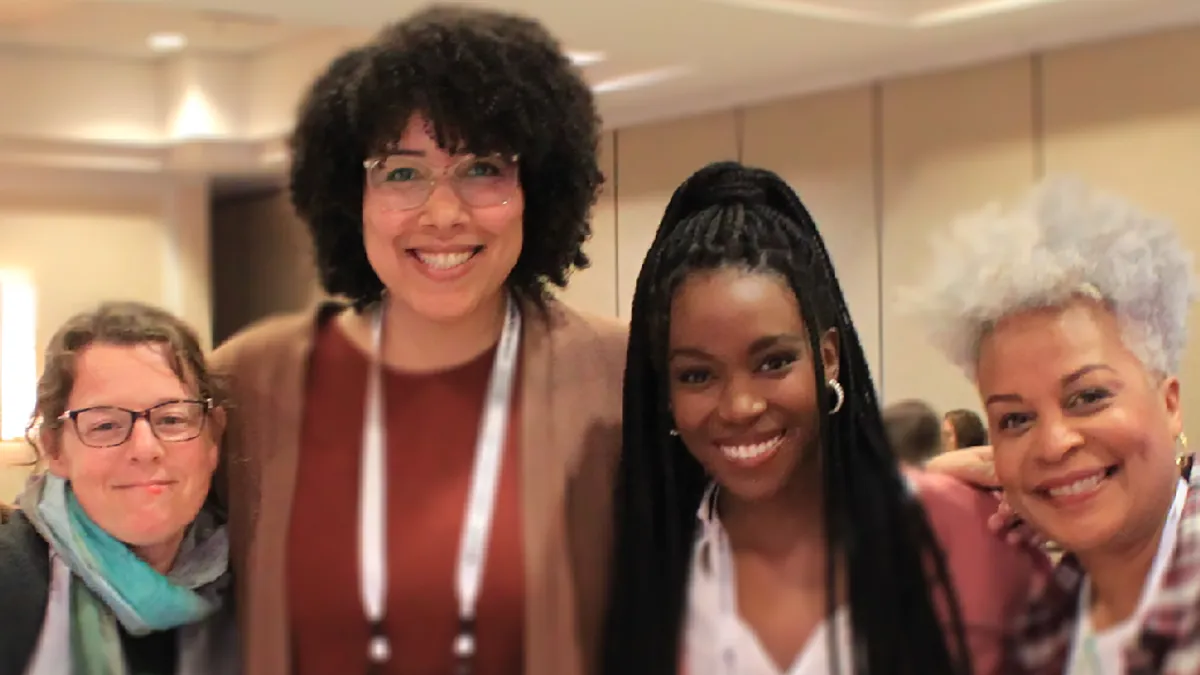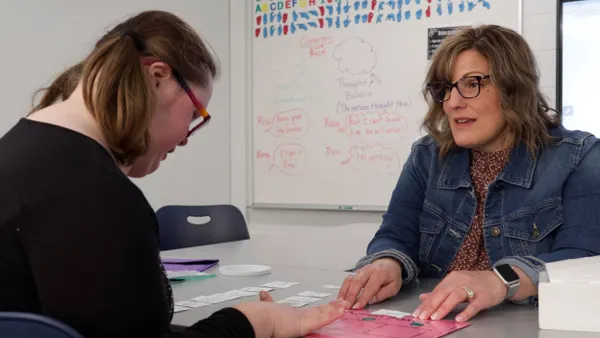Working with the right team is a very rewarding experience. And working on an ineffective team is frustrating and time-wasting. When teams hum along and have a powerful impact, collective efficacy grows. This knowledge is not new. BUT, building collective efficacy has been surprisingly elusive.
Collective teacher efficacy doesn’t just happen. Rather, it occurs when particular conditions are established by teams who set, collaborate towards, and attain shared goals related to teaching and learning. During this process, the team’s sense of empowerment increases and stronger social cohesion between team members elicits a sense of collective teacher efficacy.
Educators can make their team collaboration time more productive and efficient by planning for success. By being proactive, we enjoy the meeting experience more deeply and are more motivated to engage in the next one. And when we plan to identify and address student learning needs as a team, everyone has a better learning experience at school. A Collective Efficacy Cycle, which typically lasts 6 to 8 weeks, is one way educator teams can plan for success.
Step 1: Identify a Common Challenge
The Professional Learning Communities (PLC)+ team reviews student learning data, such as a pre-assessment, and determines a common challenge. The common challenge is the one mutual need that each teacher on the team commits to addressing throughout the cycle. This is powerful for two reasons: 1). teachers act right away by implementing a new strategy with students; and 2) they have something in common to discuss at each PLC+ meeting. These provide focus and direction for the PLC+ team.
Step 2: Build Knowledge and Skills
Based upon the common challenge, the PLC+ team builds their knowledge and skills as a collective. This means that in addition to discussing the common challenge, teachers also learn about and discuss the mutual strategy being implemented to address students’ needs. Teams may read, watch a video, and/or think-aloud about an evidence-based strategy during their PLC+ time. Professional learning, such as this, is often more beneficial for teachers than a “one and done” PD event that feels removed from teachers’ realities.
Step 3: Safe Practice
During the Safe Practice phase, PLC+ teams implement the mutually selected strategy in their classrooms multiple times. This gives each teacher several opportunities to practice the strategy, adjusting as necessary to ensure student learning. This phase is called Safe Practice so teachers can practice without fear that they’ll be observed by an administrator or other colleagues. Teachers need many opportunities to practice because we don’t get good at something by just trying it once or twice. Safe Practice typically lasts for two weeks and offers time for teachers to get comfortable implementing the strategy.
Step 4: Opening Up Practice
The next phase of the Collective Efficacy Cycle is called Opening Up Practice because we open our doors to teacher colleagues to observe the strategy in action. Observations are scheduled in advance so that the teacher being observed determines when the observation will occur and what feedback they’re looking for. Importantly, we ‘open up practice’ with intention. During this phase, each teacher on the PLC+ team observes a colleague and is observed by a colleague. Again, when we proactively plan for success, we’re more likely to ensure a good experience.
Step 5: Monitor, Measure and Modify
Throughout the Collective Efficacy Cycle, teachers monitor students’ learning and actively remove barriers that hinder progress. In so doing, students and teachers feel successful. As the Cycle ends, teacher teams reflect upon their students’ learning, as well as their own learning as individuals and as a team. A critical aspect of the Cycle that shouldn’t be missed are the acknowledgements and celebrations of learning—at all levels. Teachers want to know that they’ve make a difference in the lives of their students—throughout the year, not just on Teacher Appreciation Day. By engaging in this process, we can link teachers’ efforts to students’ learning all year long.
Final Thoughts
We’re not advocating for teachers to work harder, because we believe we already work hard. Instead, we advocate for teachers to work smarter by planning for success. By proactively creating the conditions for efficient and effective PLC+ meetings, teacher teams increase the chances that collective teacher efficacy will emerge. The Collective Efficacy Cycle offers one way for teachers and schools to shift from isolated professional development events to creating cultures where professional learning is expected, received, and valued. In so doing, students benefit, and teams are able to answer PLC+ Question #4: What Did We Learn Today? By planning for success, students and teachers succeed.







 Dive Awards
Dive Awards



